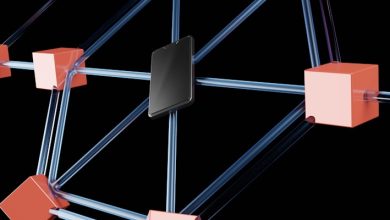How Blockchain is Changing the Future of Education

- Introduction to Blockchain Technology
- The Benefits of Using Blockchain in Education
- How Blockchain Improves Security and Authenticity in Academic Credentials
- Smart Contracts and Decentralized Learning Platforms
- Challenges and Opportunities of Implementing Blockchain in Education
- Future Trends and Possibilities for Blockchain in the Education Sector
Introduction to Blockchain Technology
Blockchain technology is a revolutionary innovation that is transforming various industries, including education. The concept of blockchain originated with the creation of Bitcoin in 2009 by an unknown person or group of people using the pseudonym Satoshi Nakamoto. Since then, blockchain has evolved into a decentralized and secure system for recording transactions across multiple computers. This technology uses cryptographic algorithms to ensure the integrity and security of data, making it virtually incorruptible. In the context of education, blockchain has the potential to revolutionize the way academic credentials are verified, stored, and shared. By leveraging blockchain, educational institutions can create a tamper-proof system that allows students to have full control over their academic records. This not only enhances the trust and transparency of educational qualifications but also streamlines the verification process for employers and other institutions.
The Benefits of Using Blockchain in Education
Integrating blockchain technology in education offers a myriad of benefits that can revolutionize the way we learn and teach. Some of the key advantages include:
- Enhanced Security: Blockchain provides a secure and tamper-proof way of storing and sharing educational records, ensuring that student data remains private and unaltered.
- Transparent Credential Verification: With blockchain, academic credentials can be easily verified, eliminating the need for third-party verification and reducing the risk of fraudulent claims.
- Decentralized Learning: Blockchain allows for the creation of decentralized learning platforms where students can access educational resources from anywhere in the world, opening up new possibilities for global collaboration.
- Smart Contracts: Smart contracts can automate administrative processes in education, such as course registration and payment, streamlining operations and reducing paperwork.
- Improved Data Management: By leveraging blockchain for data management, educational institutions can enhance the efficiency of tasks such as student enrollment, grading, and certification issuance.
Overall, the adoption of blockchain technology in education holds great promise for creating a more secure, transparent, and efficient learning environment for students and educators alike. As the technology continues to evolve, we can expect to see even more innovative applications that will shape the future of education.
How Blockchain Improves Security and Authenticity in Academic Credentials
Blockchain technology has revolutionized the way academic credentials are stored and verified, enhancing security and authenticity in the education sector. By leveraging blockchain, educational institutions can securely store student records and diplomas in a decentralized and tamper-proof system, reducing the risk of fraud and unauthorized alterations.
One of the key advantages of using blockchain for academic credentials is the elimination of intermediary verification processes. With blockchain, students can directly share their credentials with employers or other institutions, ensuring the authenticity of the information without the need for a third party to verify it.
Moreover, blockchain technology uses cryptographic algorithms to secure data, making it virtually impossible for unauthorized individuals to access or manipulate academic records. This level of security not only protects students’ personal information but also safeguards the integrity of the educational system as a whole.
Additionally, blockchain allows for the creation of smart contracts that can automate the verification process of academic credentials. These smart contracts execute predefined actions once certain conditions are met, streamlining the verification process and reducing the administrative burden on educational institutions.
Overall, the integration of blockchain technology in the education sector improves security and authenticity in academic credentials, providing a more efficient and reliable way to store and verify students’ records. As blockchain continues to evolve, its impact on the future of education is expected to be transformative, enhancing trust and transparency in the credentialing process.
Smart Contracts and Decentralized Learning Platforms
Smart contracts play a crucial role in revolutionizing the education sector by introducing transparency, security, and efficiency in various processes. By leveraging blockchain technology, decentralized learning platforms can automate tasks such as course enrollment, credential verification, and payment processing.
Through the use of smart contracts, educational institutions can ensure that student data remains secure and tamper-proof. Additionally, these contracts enable the creation of self-executing agreements between students and educators, eliminating the need for intermediaries and reducing the risk of fraud.
Decentralized learning platforms powered by smart contracts also offer unique opportunities for lifelong learners to access quality educational resources without geographical limitations. Students can enroll in courses, participate in assessments, and receive certificates in a transparent and cost-effective manner.
Challenges and Opportunities of Implementing Blockchain in Education
Implementing blockchain technology in education presents both challenges and opportunities for the future of the sector. One of the main challenges is the initial cost of integrating blockchain systems into existing educational infrastructure. This includes the expenses associated with training staff, updating technology, and ensuring data security. However, the potential benefits of blockchain in education cannot be overlooked.
One opportunity is the increased transparency and security that blockchain offers. By utilizing a decentralized ledger system, educational institutions can securely store and verify student records, credentials, and certifications. This can help combat issues such as credential fraud and ensure the authenticity of academic achievements. Additionally, blockchain technology has the potential to streamline administrative processes, reduce paperwork, and improve data accuracy.
Another challenge is the need for standardization and interoperability among different blockchain platforms. In order for blockchain to be effectively implemented in education, there must be a consensus on protocols, data formats, and governance structures. This will require collaboration among stakeholders to develop common standards that can be universally adopted.
Despite these challenges, the opportunities for blockchain in education are vast. From enabling secure and tamper-proof student records to facilitating micropayments for educational content, blockchain has the potential to revolutionize the way we approach learning and credentialing. By addressing the challenges and embracing the opportunities, the future of education can be transformed through the power of blockchain technology.
Future Trends and Possibilities for Blockchain in the Education Sector
As blockchain technology continues to evolve, the education sector is expected to see significant advancements and transformations. The use of blockchain in education is still in its early stages, but the potential for growth and innovation is immense. Here are some future trends and possibilities for blockchain in the education sector:
-
Verification of Academic Credentials: Blockchain can provide a secure and tamper-proof way to store and verify academic credentials. This can help prevent fraud and misrepresentation of qualifications, making the hiring process more efficient and reliable.
-
Decentralized Learning Records: With blockchain, students can have ownership of their learning records and share them securely with educational institutions, employers, or other relevant parties. This can lead to a more transparent and portable system of education credentials.
-
Smart Contracts for Education Agreements: Smart contracts can automate and enforce agreements between students, educators, and institutions. This can streamline processes such as course enrollment, payment of fees, and certification issuance.
-
Micro-Credentials and Badges: Blockchain can support the issuance and verification of micro-credentials and digital badges, which recognize specific skills and achievements. This can provide a more granular and customizable way to showcase one’s capabilities.
-
Peer-to-Peer Learning Platforms: Blockchain can facilitate the creation of decentralized peer-to-peer learning platforms, where students can interact directly with each other, share knowledge, and earn rewards through tokens or other incentives.
Overall, the integration of blockchain technology in the education sector has the potential to revolutionize the way we approach learning, accreditation, and collaboration. While there are still challenges to overcome and questions to address, the future looks promising for blockchain in education.



